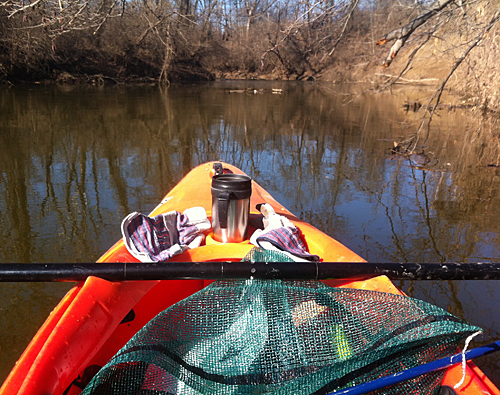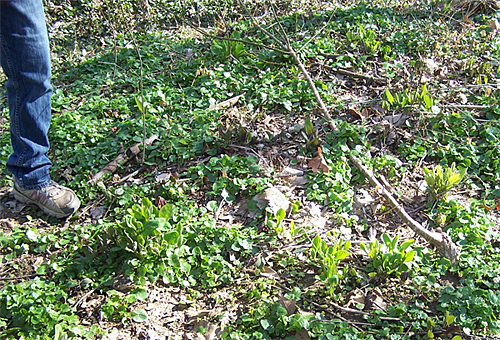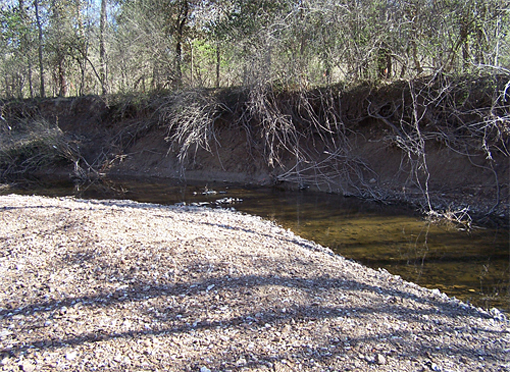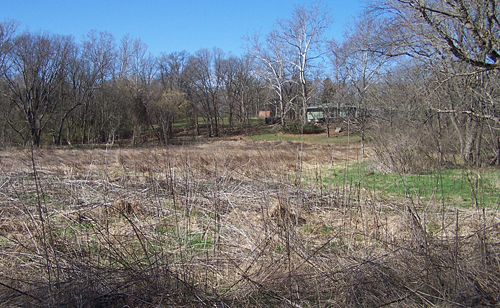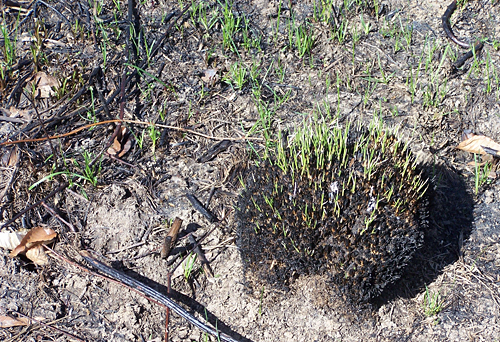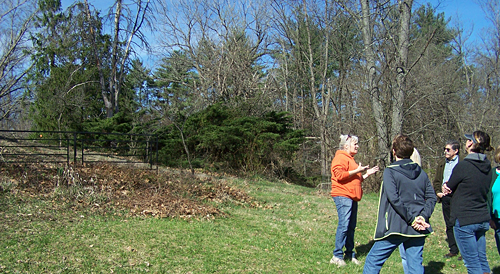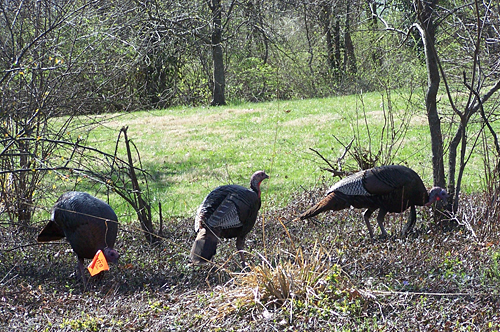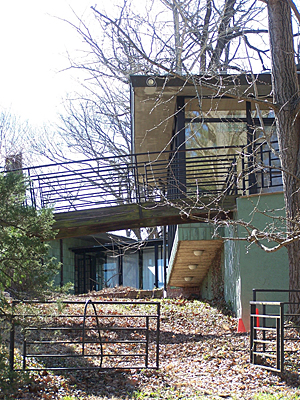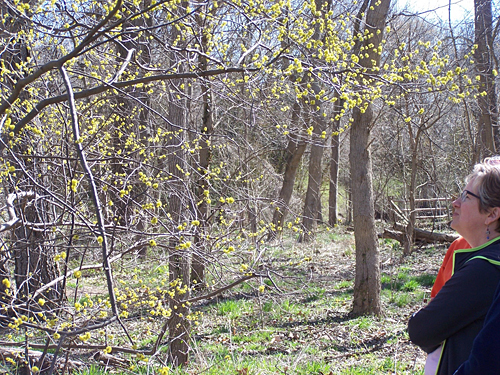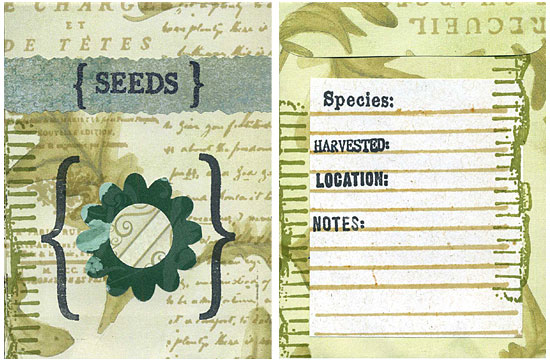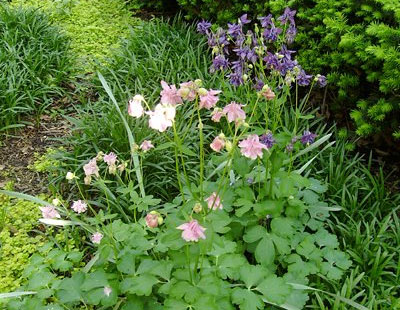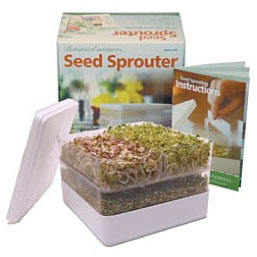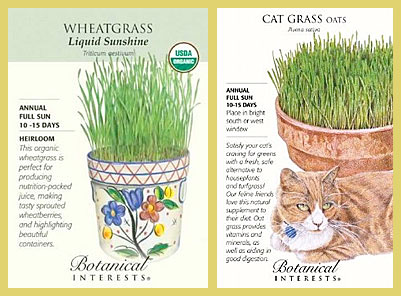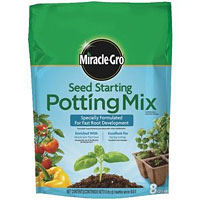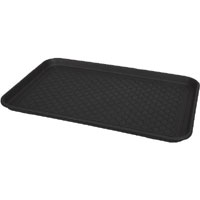Some Favorite Easy-to-Grow Plants
Every gardener has his or her own criteria for choosing favorite plants. I started my garden in very challenging conditions – in part shade and soil that was more like concrete than soil and with a high clay content. I had to try to find plants that would survive in those conditions. I also enjoy plants that are functional, either for their qualities as a culinary or otherwise useful herb, for their role in attracting beneficial insects to the garden for pest control, or for providing habitat or food for wildlife which I like to watch and study.
This is the season for plant sales – see our calendar for gardening sales and events as well as suggested planting dates. Some plant sales feature extras raised by local gardeners. These plants may do better in your garden than a plant from a large retailer that could have been shipped from a long distance away and is not adapted to local conditions. Another reason you might want to consider buying plants from a local plant sale instead of a large retailer is that some commercial growers treat their plants with systemic pesticides that are a grave danger to bees, butterflies and other pollinators. Some consumers have purchased milkweed plants to help monarchs and ended up killing them instead! Read about it in this article: How to help monarch butterflies (without poisoning them).
If you want to add some new plants to your garden here are suggestions of some of my favorites and reasons why I’m fond of them. I live in Brentwood, MO so these plants are proven to grow in the St. Louis area. Before you go shopping, you could also try using the Missouri Botanical Garden Plant Finder to select plants that fit your conditions and criteria. For example you might want plants that flower at a certain time, have a certain color, are deer-resistant, grow in a wet area, get to a certain height or other characteristics of your own choosing. With the help of the plant finder you can make a list to bring with you so you don’t end up buying plants that aren’t right for your garden. “The right plant in the right place” is a well-known saying that is by far the most important thing to consider for gardening success!
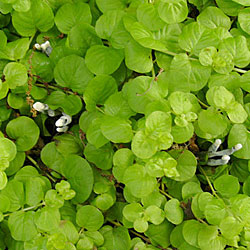
Creeping Jenny
Lysimachia nummularia ‘Goldilocks’
Reasons I like this plant:
My favorite color is lime green. There are few colors that don’t look better next to lime green in my opinion and it’s an especially nice color for brightening up a shady garden. It fills in nicely around other plants and is short in stature so other plants grow well through it. Also looks nice trailing from containers or over barriers or short walls. Unfortunately the beautiful branchlike fungus shown in this picture does not always grow with it!
Possible drawbacks to this plant:
It is not native to Missouri and might need a little maintenance to keep it from spreading into areas where you don’t want it. May become invasive.
Profile for this plant on the Missouri Botanical Garden plant finder:
Creeping Jenny
Profile for this plant on the Dave’s Garden web site:
Creeping Jenny
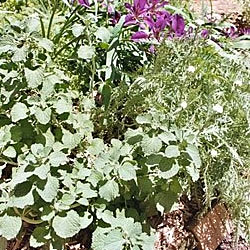
Horehound
Marrubium vulgare
Reasons I like this plant: I’ve made homemade Horehound candy and teas to alleviate coughs from this plant and found it more effective than any over the counter cough remedy I have tried. It does need a fair amount of sugar to taste decent but delicious if sweetened enough. The leaves are pretty durable and they usually look good until well into cold weather. I’ve never seen it bothered by pests. Horehound can be grown from seed – my plants are descended from a plant that I bought for my Mom in memory of her Dad, who loved Horehound candy! We sell Horehound candy at Schnarr’s if you would like to try some without having to make your own. The Horehound is toward the front of the photo and has the wrinkly leaves.
Possible drawbacks to this plant: Not native to this continent. It is reported invasive in some areas but for me it’s not a spreader, possibly because of my part-shade conditions.
Article about this plant on the Dave’s Garden web site:
Horehound
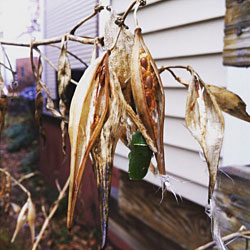
Swamp Milkweed
Asclepias incarnata
Reasons I like this plant: The picture shows the milkweed looking brown and dried up in the fall, but also shows what I like best about it – a monarch chrysalis! Swamp Milkweed provides food for monarch caterpillars and nectar for many other pollinators. The flowers are beautiful and in my opinion worth the plant not looking that great at the end of the season. If like me you like to watch winged wildlife this is one of my best attractors when in bloom. Try planting some tall late-flowering annuals around it to help disguise the dried up stems. It is native to Missouri and can be grown from seed.
Possible drawbacks to this plant: Not very attractive looking in late summer and fall.
Profile for this plant on the Missouri Botanical Garden plant finder:
Swamp Milkweed
Profile for this plant on the Dave’s Garden web site:
Swamp Milkweed
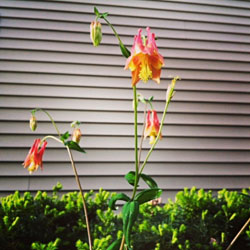
Columbine
Aquilegia canadensis
Reasons I like this plant: I have a variety of types of Columbines but a Missouri native is the one shown in the picture. Some Columbines can be grown true from seed, and they usually reseed themselves pretty readily. In a recent storm, a hybrid Columbine with larger flowers was partially knocked over but the native with the smaller flowers was not affected. That’s one drawback to oversize flowers that are sometimes bred into plants – they can be too large to be supported by the plant in rough weather. All of my Columbines, species or hybrids, attract lots of beautiful hummingbirds.
Possible drawbacks to this plant: Foliage is very pretty in spring but might be attacked by leaf miners later in the season. The plant won’t be killed but the leaves won’t look very attractive. To fix this, wait until the plant is done blooming and cut all the foliage back after you see a leaf miner infestation. The foliage will regenerate without the leaf miners and probably will not be re-infested since the time of activity for the leaf miners will be over. The MOBOT plant finder says the native species is more resistant to leaf miner than other varieties. My plant is three years old and didn’t bloom until this year. I don’t remember whether the foliage had leaf miners in previous years or not but I will check to see this year if it really is resistant. I know my other Columbines were affected as they always are. Columbines are usually short-lived so save some seeds in case it doesn’t reseed on it’s own – but it probably will!
Profile for this plant on the Missouri Botanical Garden plant finder:
Columbine
If you want to read about all the other types of Columbines just do a search for “Aquilegia”.
Profile for this plant on the Dave’s Garden web site:
Columbine
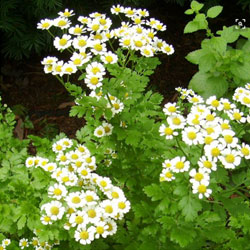
Feverfew
Tanacetum parthenium
Reasons I like this plant: It reseeds itself here and there which in my informal garden looks nice but could be a problem depending on what kind of garden you have. I like how it pops up around the garden because it doesn’t get very big and a bit of white here and there in a garden really helps the appearance in my opinion. It has a reputation for having medicinal properties. Feverfew attracts a lot of the small bees and wasps that are beneficial in the garden. Makes a nice dried flower.
Possible drawbacks to this plant: It is not native to this continent and is now considered naturalized in North America. Foliage sometimes doesn’t look good toward the end of the summer – apparently it gets attacked by some kind of sucking insect that makes it look a bit mottled but the plant does not seem to be harmed. It could get weedy, I sometimes find young plants in the lawn, but once you pull it out it’s gone, it doesn’t leave behind tubers or rhizomes or anything like that. It’s supposed to be short-lived but I’ve never noticed that because it reseeds reliably.
Article about this plant on the Dave’s Garden web site:
Feverfew
Profile for this plant on the Dave’s Garden web site:
Feverfew
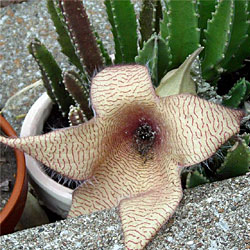
Carrion Flower or Starfish Flower
Stapelia gigantea
Reasons I like this plant: It’s very easy to care for – it doesn’t need much more than to be brought indoors during cold weather and left outside to catch rainwater in the warm months. It’s native to the deserts of South Africa and Tanzania so give it good drainage. You might want to put it in a larger pot every few years as it slowly expands. It’s a great houseplant/patio plant if you have a taste for something on the weird side! The inside of the large flowers have an unusual brain-like texture and the plant emits a smell like rotting meat to attract flies to pollinate it. A real conversation starter! When not in bloom, it looks like a nondescript green cactus-like succulent.
Possible drawbacks to this plant: It smells really bad when in bloom and would need to be moved outdoors during that time. The first time mine bloomed we thought there might be rotting chicken around and we checked the fridge and trash can!
Profile for this plant on the Missouri Botanical Garden plant finder:
Carrion Flower
Profile for this plant on the Dave’s Garden web site:
Carrion Flower

Louisiana Iris
Iris giganticaerulea
Reasons I like this plant: This plant is very easy-care. Mine are descendants of irises that were planted in my parents’ yard in the 1980s and went dormant for a couple of decades before reappearing when a tree near them partly died out and some of their sunlight was restored. My parents originally got them from my Dad’s aunt. I moved some to my garden and they have multiplied enough to be growing in three locations now. I’ve always liked them but recently after studying for my bulbs test I decided to research exactly what kind they are and I discovered that the original species plant is native to Louisiana and perhaps Texas also. The species is endangered in its native range. Mine appear to be a hybrid or cultivar and not the species plant but I’m not sure which one it is. Based on pictures I’ve seen online it looks a lot like the cultivar ‘Black Gamecock’.
Possible drawbacks to this plant: Needs to be divided after several years when it gets so crowded it stops blooming. The rhizomes are really large and may not be easy to remove if you ever decide you don’t want them. You also may need to thin them to stop them from spreading too much.
Profile for this plant on the Dave’s Garden web site:
Louisiana Iris ‘Black Gamecock’
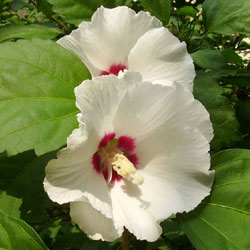
Rose of Sharon
Hibiscus syriacus
Reasons I like this plant: The species plant can easily be grown from seed. Mine has both white and lavender colored flowers on it which was a nice surprise – I got the seedling from my Mom and Dad’s yard which had all lavender colored plants in it. If you like winged wildlife in your garden Rose of Sharon flowers will draw seemingly every bee, butterfly and hummingbird in the neighborhood. The seed pods will be relished by birds in the winter. The beautiful goldfinch is one of three species I’ve observed feeding on mine. Once established this plant needs almost no care. I say almost no care because my Dad prunes his. I’ve never pruned mine and it’s doing fine but now that I know a bit about how and why to prune from my Master Gardener class I may remove some branches that are rubbing together. My Dad has accidentally killed some of these plants by pruning them too much but I have never seen one die of natural causes or have a noticeable pest issue, and I grew up with bunches of these as hedges in our yard.
Possible drawbacks to this plant: It is not native to this continent and could be invasive. Produces a lot of seedlings which are not always easy to pull up because they are woody and have a long taproot. I control most of the extra seedlings with lasagna gardening around the base of the plant and pulling the seedlings when small. It’s a little extra effort to control the seedlings – not so much that it’s a problem for me but some people really hate this plant because of that.
Profile for this plant on the Missouri Botanical Garden plant finder:
Name of Plant
Profile for this plant on the Dave’s Garden web site:
Rose of Sharon
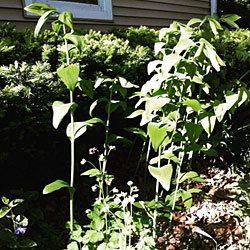
Solomon’s Seal
Polygonatum biflorum
Reasons I like this plant: It’s native to Missouri and will naturalize in the right conditions. I was given four plants in a swap two years ago and this spring they finally have started to spread a little bit – I counted 17 yesterday! I have room for more so it can spread for awhile without bothering me. You are probably noticing a pattern in the kinds of plants that become my favorites – they tend to spread or naturalize. In a formal garden this may not be a good thing but I like to get extra plants because I have a lot of space to fill in an area where it’s hard to get anything to grow so I’m grateful when I find plants that like my conditions! I also like to have extras for trading stock since most of my really good plants have been acquired by trading, not purchasing. In the front garden where large oak trees shade it for a lot of the day, I need plants that look good in a woodland setting and it pleases me to find a beautiful tall plant to contrast with all the nice groundcovers I have! The large leaves almost look tropical, it doesn’t really look like a “wildflower” though that’s what it is.
Possible drawbacks to this plant: I don’t know of any other than it might spread too much for some situations.
Profile for this plant on the Missouri Botanical Garden plant finder:
Solomon’s Seal
Profile for this plant on the Dave’s Garden web site:
Solomon’s Seal
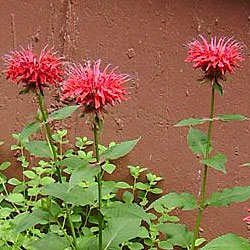
Bee Balm
Monarda didyma
Reasons I like this plant: This plant ticks off almost all the boxes of what I really want – attracts wildlife, is native, naturalizes, is a useful herb, is fragrant, grows in part shade – and as an extra bonus – it’s RED! Red and blue are my favorite flower colors but there aren’t many plants in those colors that will grow reliably for me. I finally got this species to “take” in my garden after three tries and these days it’s spreading all over the place. A sea of red makes me happy so I am THRILLED. I finally have enough so that they will need to be thinned and I can trade some. Red is also the favorite color of hummingbirds – they will feed off of other colors of flowers if they are suitable but seeing some red helps them find the other flowers. The round seed heads look good dried and provide winter interest if you leave them standing.
Possible drawbacks to this plant: Foliage tends to look bad late in summer and is susceptible to powdery mildew. Some cultivars are supposed to be resistant. Most of my Bee Balms get the powdery mildew at least a little bit but in my case it doesn’t seem to kill the plant or spread to other species. I’m willing to put up with it to get red flowers! Once you get it in conditions it likes, it does spread a lot so in some situations that could cause maintenance issues.
Profile for this plant on the Missouri Botanical Garden plant finder:
Bee Balm
Profile for this plant on the Dave’s Garden web site:
Bee Balm

Purple Coneflower
Echinacea purpurea
Reasons I like this plant: Beauty is enough reason to grow it. This is also a useful plant for supporting wildlife – bees and butterflies will enjoy the nectar and it’s famous for feeding goldfinches with the seeds. It’s native and will create new seedlings which can be transplanted if they are not in a convenient place. It took several years (about 8?) before I had enough seedlings to start moving them to other spots in the garden. There are lots of cultivars in really nice colors but they are not as vigorous as the species, so as tempting as those other colors are I’ll stick to the species!
Possible drawbacks to this plant: It’s kind of slow growing so you have to be patient. I leave the dried plants standing in the fall when I can to feed birds in the winter but some people think the dried stems are unattractive. You might have to cut them down if they are in a conspicuous spot if you have fussy neighbors. Someone will want the seeds if the birds don’t get the chance to eat them.
Profile for this plant on the Missouri Botanical Garden plant finder:
Purple Coneflower
Profile for this plant on the Dave’s Garden web site:
Purple Coneflower
